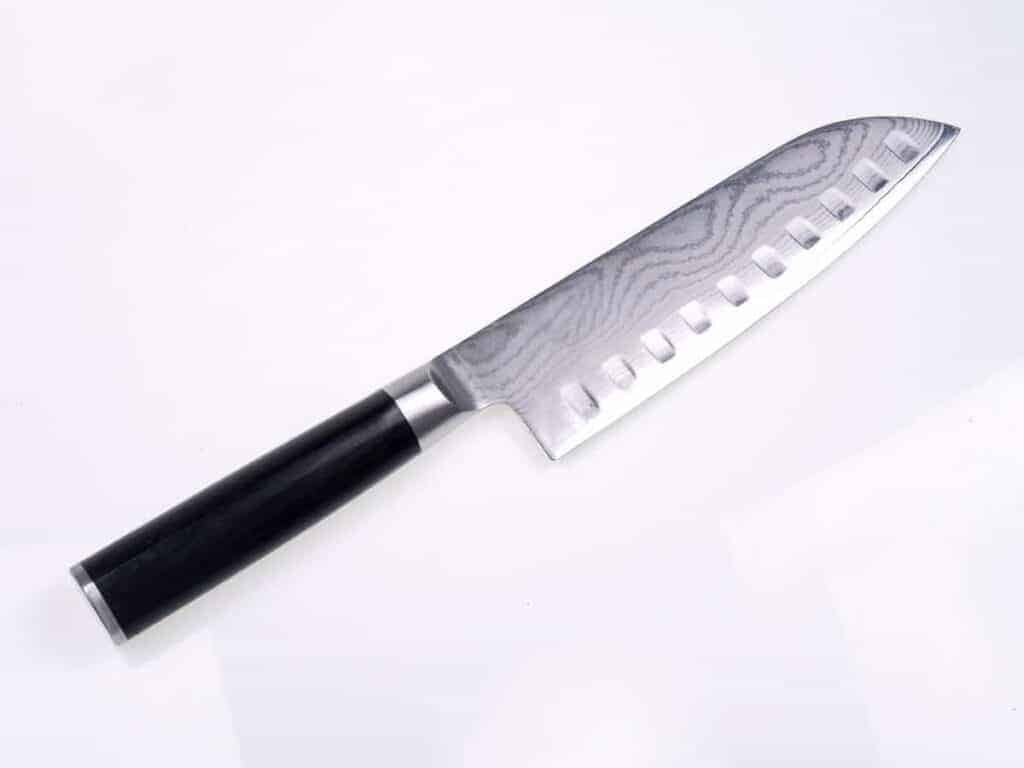This post contains affiliate links. As an Amazon Associate I earn from qualifying purchases
Table of Contents
Shun Classic vs Premier Knife
No other country has a history of blade craft quite as rich and complex as Japan. The cutlery of Japan has influenced knife makers around the world, and you probably own a kitchen knife with a design inspired by the country’s blade craft.
Some of the most popular kitchen knives in the world are made in Japan, and many of them are from the brand Shun (pronounced ‘shoon’). Shun is a kitchen cutlery producer that specializes in hand-finished blades at affordable prices.
Two of their most popular blades are the Classic and Premier knives. In this article, we’ll be discussing some of the differences between these blades, and how you should go about choosing one or the other.
Shun Classic
The Blade
The blade on the Shun Classic is as traditional as it gets – the same for the materials that are used to make it. The shape is super simple and functional and offers three different edge types: an acute point for piercing, a flat section for fast chopping, and a slightly thicker midsection for slicing.
This is a true all-purpose blade shape that one would expect from a kitchen knife, and is reliable in the kitchen. As with most of Shun’s knives, the blade on the Classic is made of VG-10 steel and plated in faux Damascus.
VG-10 steel is an excellent metal for kitchen purposes. It is a modern, mid-range stainless steel that is only produced in Japan, and its main feature is its impeccable resistance to stains and rust.
This comes in extremely handy in kitchen environments, since knives that rust or stain are not safe for use when preparing food. As with most knife metals, VG-10 steel doesn’t stay sharp forever, and it does not sharpen as quickly as one might expect.
Ergonomics
The Shun Classic features a handle made from Pakkawood in the shape of a “D”. It feels comfortable to hold, and even though composite woods are not as attractive as natural woods, they have the advantage of being able to resist moisture.
Composite woods can also handle (no pun intended) temperature changes much better than natural woods, which can warp as the temperature fluctuates.
Shun Premier
The Blade
The Shun Premier blade is sharpened to 16 degrees on both sides, which makes it much sharper than its traditional European counterparts. This knife is also sturdy enough to keep its edge for quite some time, thanks to its VG-Max super steel.
This steel is the successor to the VG-10 steel found on the Shun Classic and is essentially its improved version. VG-Max steel is made using more carbon, which, contrary to what you might think, actually improves the strength of the blade.
It is also able to resist wear and tear much more effectively than the Shun Classic. Tungsten is used to make this blade incredibly fine and gives it a super sharp edge.
The blade on the Premier is made using the Kasumi technique, or the ‘Mist’ technique. The exterior of the blade is soft and smooth, like mist, while the inside is extremely hard in order to maintain a sharp edge.
The Kasumi blade-making technique also allows for blades to be sharpened with ease. In fact, ancient Samurai swords were made using the Kasumi technique, which is reflected in the appearance of the Shun Premier.
Ergonomics
Like the Shun Classic, the Shun Premier’s handle is made from Pakkawood. It is constructed from pieces of hardwood veneer that have been dyed and coated in plastic resin.
Since Pakkawood is nearly completely waterproof, it won’t absorb water, and won’t slip from your grip when in use. The shape of the handle is much straighter than the Shun Classic, which gives it a far more professional look and feel.
What’s the Difference?
As you have probably noticed, the Shun Classic and Shun Premier knives are quite similar, while still having some key differences. If we were to summarize these differences in just two words, they’d be skill level.
The Shun Classic is definitely more suited for use in an everyday household kitchen. However, that does not mean that it can’t find some good use in the kitchen of a professional chef. It is called a chef’s knife, after all.
The Classic is only better suited for everyday household use by default. Both the Classic and the Premier are premium quality knives, but the Premier is definitely going to give you that professional experience that high-quality knives deliver.
In terms of actual physical differences, the blade on the Premier is slightly sharper and sturdier than that of the Classic. However, the Classic may feel more comfortable to hold by the average cook, thanks to its D-shaped handle.
Both handles are made from Pakkawood, which is resistant to moisture and warping. This makes both knives suitable for a wide variety of kitchen applications.
Caring and Maintaining Shun Cutlery
Shun knives are made to last for both home cooks and skilled chefs, so you should take extra care when using and storing them. With proper care, a Shun knife can last an extremely long time and provide unprecedented kitchen performance.
To avoid chipping the blade of your Shun knife, use a smooth ‘hand saw’ motion when cutting and slicing, rather than an up-and-down chopping style.
Hand wash your Shun knife with mild soap and dry thoroughly before storing it. This will help avoid any micro-corrosion, rust, and chipping.
Abrasive and citrus-based soaps will cause abrasion, so avoid using them when cleaning these knives.
Use wooden cutting boards with these knives, as glass, marble, ceramic, etc. boards will chip and dull the blade.
Store your Shun knives in a sheath, block or in-drawer holder when packing them away. This will keep the blade from chipping and dulling, and will also keep you and the rest of the household safe.
Be sure to follow the included guide when sharpening these blades, to ensure that they maintain their 16-degree angle, and also to avoid damage.
Wrapping Up
So, while you could technically use either the Shun Classic or Premier, there are a couple of key differences that make them suited for different purposes and environments. We hope that this guide has made those differences a little clearer. Happy chopping!


